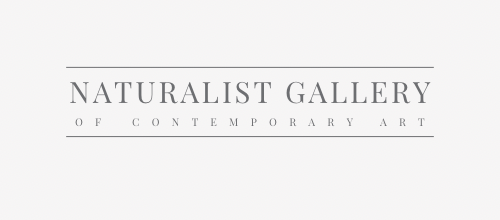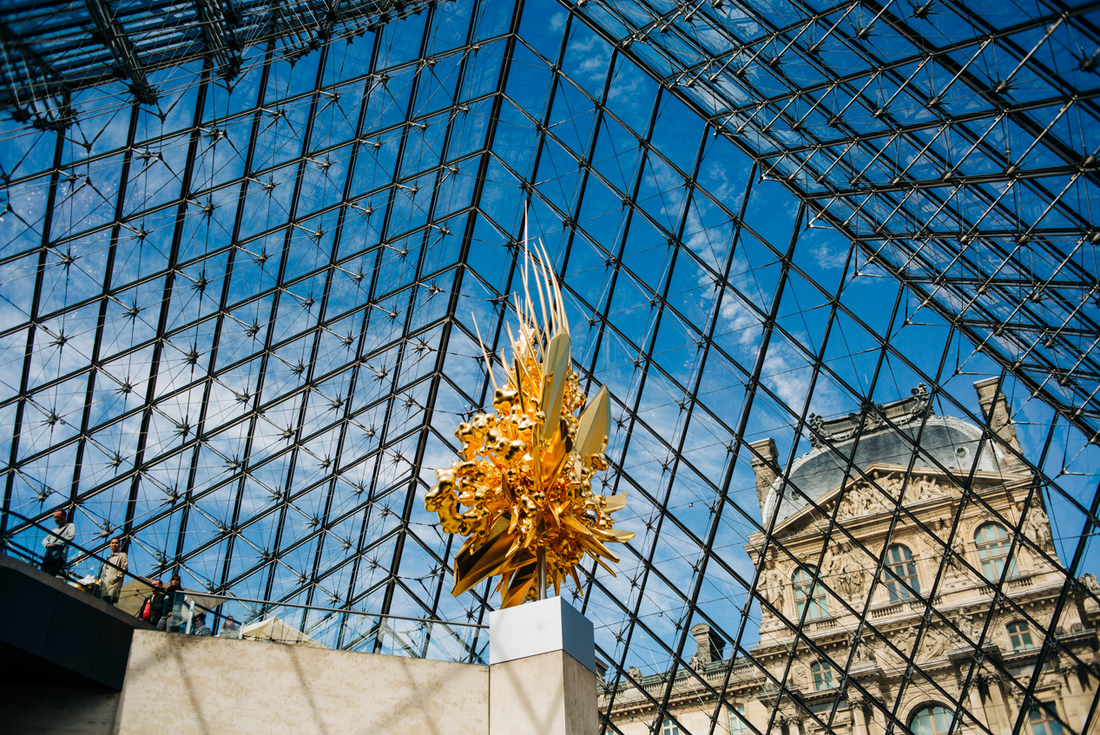The main art movements of today encompass Abstract, Modern, Impressionism, Pop, Cubism, Surrealism, Contemporary, Fantasy, Graffiti, Portraiture, Typography, and Urban art.
- Abstract Art:
View Naturalist Gallery's curated selection of contemporary, abstract art.
Abstract art challenges traditional representation by using colors, shapes, and forms to convey emotions and ideas. It's a non-representational form that encourages viewers to interpret the artwork personally. Abstract art is characterized by its ability to evoke powerful emotions and a sense of mystery. Notable abstract artists include:
-
Peisy Ting: Known for her work "Spherical Revelation,"

Ting's abstract paintings are captivating and thought-provoking, inviting viewers to explore the depths of their imagination. -
Diana Malivani: Her artwork "Sea Breath"

beautifully captures the essence of the ocean through fluid and dynamic abstract brushstrokes, creating a sense of movement and energy. -
Liane Merz: Her painting "Es wird gegessen, was auf den Tisch kommt"

is currently available in limited edition framed archival paper prints released exclusively at Naturalist Gallery.
- Modern Art:
The modern art movement emerged in the 19th and 20th centuries, breaking away from traditional techniques. Modern artists aimed to portray subjects from unique perspectives, rejecting conventional norms. This style often embraces bold colors, strong lines, and innovative techniques. Notable modern artists include:
-
Aarti Bartake: Her work "Metamorphosis - Sea Stories"

exemplifies modern art's experimental nature, exploring themes of transformation and metamorphosis through striking visual imagery. -
Henri Ekman: Known for "With Friend,"

Ekman's modern art style combines expressive brushstrokes with vibrant colors to depict captivating and emotionally charged scenes. -
Bradley Lusa: Known for works like "Late Spring in the Woods,"

Lusa's new, iconic paintings are for sale exclusively at Naturalist Gallery.
- Impressionist Art:
Impressionism celebrates the use of light and brushwork to convey the essence of a subject. Artists focus on perception rather than precise depictions, creating a sense of atmosphere and immediacy in their artwork. Notable impressionist artists include:
-
Oliver Staeuber: His piece "Pacific Nr. 11"

captures the fleeting moment of joy and excitement, employing loose brushwork and vibrant colors characteristic of impressionist art. -
Georg Sili: With "Bukowski,"

Sili's impressionist style evokes a dreamy and poetic ambiance, inviting viewers to immerse themselves in the painting's emotional narrative. -
Gavin Coates: His painting "Display Shark"

and other new paintings are available for purchase at Naturalist Gallery.
- Pop Art:
Pop art celebrates popular culture and mass media imagery, presenting familiar symbols in a vibrant and exciting manner. This style often uses bold colors, repetition, and juxtaposition to convey messages about consumerism and society. Notable pop artists include:
-
Carlo: Known for "Caneta Azul,"

Carlo's style incorporates vibrant primary colors into portraiture, reflecting the influence of pop art in his work. -
7debt: His "Untitled" digital render

combines traditional pop art aesthetics with contemporary, digital applications, generating a synthetic, surrealist reality.
- Cubism:
Cubism explores the representation of subjects from multiple angles, challenging conventional perspectives. This style often incorporates geometric shapes and fragmented forms to depict the subject from various viewpoints. Notable cubist artists include:
-
Allan Bealy: His piece "Rebus"

exemplifies the cubist approach, breaking down the subject into geometric planes and exploring the interplay of contrasting image styles.
- Surrealism:
Surrealism juxtaposes real objects in unreal situations, creating dreamlike and thought-provoking imagery. This style encourages viewers to delve into their subconscious and explore the realm of the imagination. Notable surrealists include:
-
Brennan Kenealy: With "Untitled," photography on canvas prints

Kenealy delves into the subconscious, creating a surreal and enigmatic scene that challenges traditional notions of reality. -
Matt Lock: Known for "This Ends Tonight,"

Lock's surreal artwork transports viewers to a world of fantasy and whimsy, inviting contemplation and wonder.
- Contemporary Art:
Generally, the term contemporary art refers to any work made by contemporary artists. But Contemporary Art can also mean art that represents the style of the present, embracing diverse mediums and techniques. This style often explores current issues, social commentary, and innovative approaches to art-making. Notable contemporary artists include:
-
Shiraga Kazuo: His artwork "Golden Wings Brushing the Clouds Incarnated from Earthly Wide Star"

Through prior purchase from the Mary and Leigh Block Fund, restricted gift of Barbara Bluhm-Kaul and Don Kaul. -
Packsoe: With "Circular,"

Packsoe's contemporary art style combines elements of abstraction and minimalism, exploring the balance between chaos and harmony.
- Fantasy Art:
Fantasy art draws inspiration from mythical worlds and magical creatures. This style often transports viewers to otherworldly realms and sparks the imagination. Notable fantasy artists include:
-
Guang-Yu Zhang: Known for "Fairyland G-I (W),"

Zhang's fantasy art captures the enchanting world of fairies and mystical landscapes, evoking a sense of wonder and magic. -
Sanjeewa Nissanka: His artwork "Beauty of the Nature"

portrays mythical creatures and lush landscapes, inviting viewers on a journey through the realms of fantasy.
- Graffiti Art:
Graffiti, once considered vandalism, has evolved into a legitimate art form. This style celebrates urban energy and creative expression, often featuring bold lettering, vibrant colors, and social commentary. Notable graffiti artists include:
-
Dmitri Vrubel: Known for "My God, Help Me to Survive This Deadly Love"

Painted on the eastern side of the Berlin wall in 1990, it has become one of the best known pieces of Berlin wall graffiti art. -
Keith Haring: With "Sunset in the Garden City,"

covering the west face of a private rowhouse in the Point Breeze neighborhood of Philadelphia, Pennsylvania. It was painted during a three-day workshop on 1, 2 and 3 September 1987.
- Portraiture:
Portraiture captures the essence of human figures, reflecting their emotions and personalities. This style often seeks to convey the inner world of the subject and the intricacies of human expression. Notable portrait artists include:
-
Elizabeth Peyton: Her piece "Kurt Cobain"

is part of a celebrated series of portraits she painted of the cult figure in 1995. -
Dakota Proctor: Known for "Hyde Wars"

Proctor's portraiture style explores the subtleties of human expression and interaction.
- Typography:
Typography is the art of arranging text creatively to convey a message or evoke emotions. This style often explores the visual aesthetics of letters, fonts, and words. Notable typographers include:
-
Ahmad Shukri Mohamed: With "Please Stand Up 'Majulah Singapura' #2,"

Mohamed's typography art combines language and design to communicate powerful messages.
- Urban Art:
Urban art reflects the vibrancy and dynamism of city life, capturing the essence of urban environments. This style often celebrates street culture and explores the impact of urbanization on society. Notable urban artists include:
-
Shepard Fairey: "Andre the Giant Has a Posse"

is a campaign that was meant to be "an experiment in phenomenology" based on a design by he created in 1989. The image was passed around as stickers by graffiti artists and the skater community, and began showing up in cities all around the United States.
Explore our curated selection of contemporary artists from around the globe.
Naturalist Gallery offers artist representation internationally. Apply your art.
By exploring these art styles and the works of these contemporary artists, you can get a sense of what's going on in the art world. Art transcends time and boundaries, inviting you to explore diverse expressions and interpretations. Embrace the beauty of fine art, and let it color your life and surroundings.
You may also find the following articles helpful:
The Most Iconic Abstract Artworks of the Last Century
The 14 Essential Artists of Impressionism

